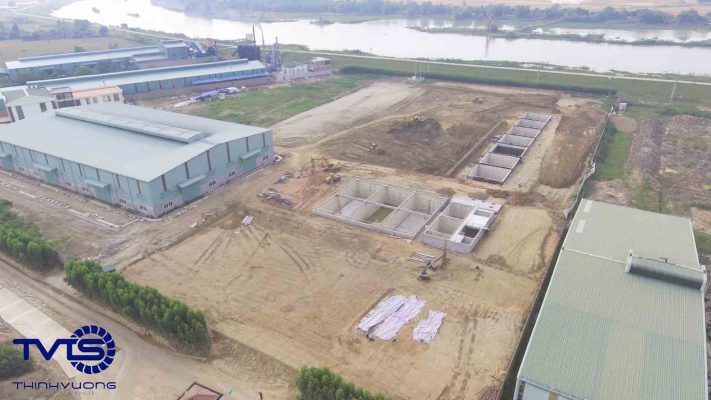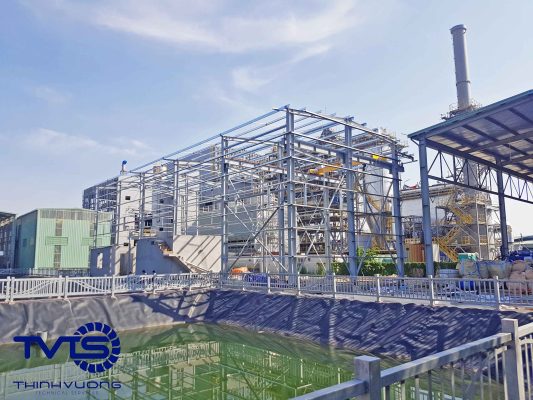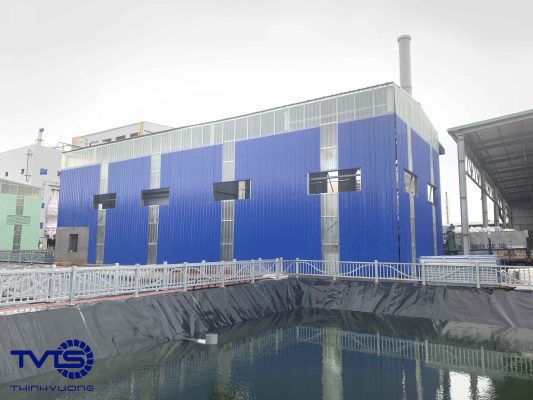Construction, installation and operation of septic tank wastewater treatment system of waste-to-energy plant. Meets discharge standards according to current regulations of the Ministry of Natural Resources and Environment.
Nội dung
- 1. Project information
- 2. Input parameters of processing system
- 3. Proposed technology and treatment solutions
- 3.1 Mechanical, physical, pre-treatment processes
- 3.2 Chemical and physical processes
- 3.3 Biological processes
- 3.4 Biological processes of activated sludge aerobic suspended growth
- 3.5 Biological processes of anaerobic growth
- 3.6 Biological fermentation and anaerobic oxidation
- 3.7 Activated carbon filtration and deodorization
- 4. Advantages of the treatment technology
- 5. Wastewater treatment results
1. Project information
– Project name: Construction, installation and equipment, operation of septic tank wastewater treatment system of industrial park. Belonging to industrial waste treatment area of Bac Ninh province.
– Location: Bac Ninh province, Vietnam.
– Capacity: 250 m3/day and night.

2. Input parameters of processing system
- Type and level of construction: Level III technical infrastructure construction.
- Wastewater type: Septic tank wastewater. Allowable COD index up to 24,300 ppm.
- Requirements for wastewater quality after treatment: Wastewater after treatment meets QCVN 40:2011/BTNMT, type A.

3. Proposed technology and treatment solutions
Applying chemical and physical methods and MBR biomembrane technology. The technological process at TVTS treats wastewater into clean water, discharges wastewater to meet current standards.
Technological process:
3.1 Mechanical, physical, pre-treatment processes
Mechanical, physical, pre-treatment processes include trash screens, sand separation tanks, preliminary sedimentation tanks, grease collection tanks, and filters.
3.2 Chemical and physical processes
Chemical and physical processes in wastewater treatment use chemicals that can react to reduce or oxidize pollutants in wastewater. There are usually processes such as pH adjustment process, fast reaction process, slow reaction process, oxidation-reduction process, disinfection process, sedimentation process or also known as polymerization process, coagulation process, flocculation process, sedimentation separation process, oxidation-reduction process, disinfection process. Chemicals commonly used are NaOH, HCl, H2SO4, NaHSO3, PAC, Polymer, Iron alum, Aluminum alum, H2O2, Chlorine, Javen…
3.3 Biological processes
Biological processes can be applied to treat many types of wastewater depending on each treatment stage.
3.4 Biological processes of activated sludge aerobic suspended growth
The basis of the process is the activated sludge aerobic suspended growth process. Including the application forms of flow suspension, complete mixing and batch suspension.
3.5 Biological processes of anaerobic growth
3.6 Biological fermentation and anaerobic oxidation
3.7 Activated carbon filtration and deodorization
4. Advantages of the treatment technology
- Wastewater treatment without using many complicated technologies. Easy to operate. Cost savings.
- Eliminates most bacteria in water.
- Treated water meets discharge standards type A, QCVN 40:2011 BTNMT.

5. Wastewater treatment results
Output clean water: ~ 160 m3/day and night.
Quality: Meets column A, QCVN 40:2011 BTNMT.



